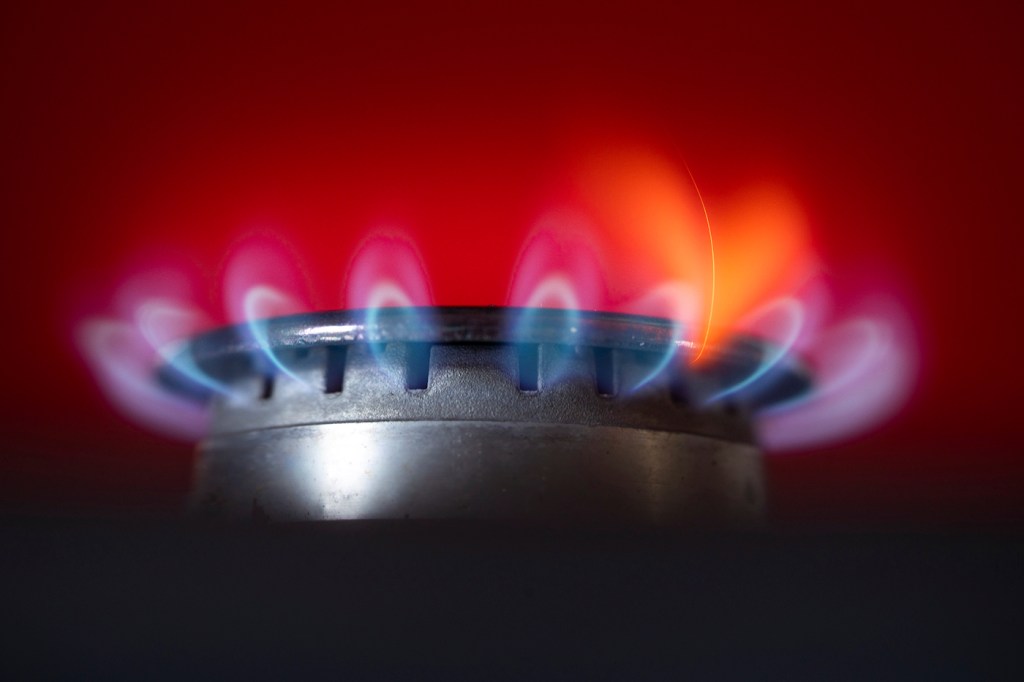Should you get rid of your gas stove? Northeastern experts break it all down

New evidence pointing to the potential health risks associated with gas stoves now has many people asking: Should I get rid of mine?
The U.S. Consumer Product Safety Commission last week hinted at regulating the kitchen appliances that can contribute to indoor air pollution and exacerbate certain health conditions. Chatter about the gas-powered stoves—a fixture in tens of millions of homes—spiked after a study published in December linked them to childhood asthma, noting that roughly 13% of “current childhood asthma in the U.S. is attributable to gas stove use.”
Reports suggested an outright ban on the stoves may be in the cards, promoting the commission to offer some clarity on their position. Alex Hoehn-Saric, the commission’s chair, said that the federal agency isn’t looking to ban the stoves. Rather, the agency is “exploring new ways to address” the associated health risks.
“Contrary to recent media reports, I am not looking to ban gas stoves and the [U.S. Consumer Product Safety Commission] has no proceeding to do so,” he said.
“CPSC also is actively engaged in strengthening voluntary standards for gas stoves,” Hoehn-Saric said. “And later this spring, we will be asking the public to provide us with information about gas stove emissions and potential solutions for reducing any associated risks.”
Should you ditch your potentially hazardous gas stove? Neil Maniar, associate chair, professor of practice, and director of the master of public health program at Northeastern, says there are a number of steps you can take to make your indoor environment safer that don’t involve outright tossing them.

“This is a really important opportunity to illuminate the risks, and help people understand that there are things we can do,” Manier says.
“So, improving ventilation, for one,” he says. “Ventilation is a really important part of this.”
Adjusting the range hood on your stove can help vent out harmful pollutants, Maniar says. Otherwise, fans, air filters and opening windows can provide effective ventilation.
One reason gas stoves are considered dangerous is that they emit a pollutant called nitrogen dioxide, which even at low levels of exposure present significant health risks, research has shown.
“We now need to be looking at how we can improve standards and regulations associated with indoor air quality,” Maniar says. “I think it’s a really important opportunity to educate the general public.”
Maniar says that if you are in the process of purchasing a new stove, experts may now recommend choosing an electric burner as an alternative.
“We’ve long-known that gas heating—gas stoves—is harmful in terms of indoor air pollution,” he says. “A lot of research has formed a really strong base of evidence. The challenge has been that this hasn’t been widely understood or widely known.”
Since the COVID-19 pandemic, people have been spending more time indoors, raising concerns about the air quality in such environments, Maniar says.
“My one concern is that people are going to suddenly worry or panic,” Maniar says. “I think we want to have a really thoughtful approach to addressing what is a really serious public health issue.”
But beyond the public health impacts, moving away from gas stoves as a “bridge fuel” is key in the fight against climate change, says Laura Kuhl, assistant professor of public policy and urban affairs at Northeastern.
“We need to be reducing household gas usage dramatically,” Kuhl says. “And until recently this was actually a fairly difficult technical challenge.”
In addition to gas stoves, space heating and hot water heating are the primary household uses of gas, and heat pumps provide a clean alternative to gas for heating and cooling.
The cleaner alternative to gas burners are electric “induction” stovetops. Kuhl says older more conventional electric variants (induction is relatively new technology) historically “have really been suboptimal in terms of their performance”—not to mention costly. Many consumers, if they weren’t already aware of them, have simply had to accept the public health impacts of gas cooking in lieu of affordable alternatives, she says.
“That’s just not true anymore,” Kuhl says.
Propaganda from Big Gas has also kept Americans hooked on their gas stoves, with companies promoting flame grilling as cleaner, cheaper and a chef’s favorite. For nearly a century, gas companies have used the same tactics deployed by the tobacco industry to promote the cooking method that health experts have long-known present health risks, Kuhl says.
Although natural gas is technically cleaner than other fuel sources, context matters, Kuhl says. In terms of carbon intensity, Kuhl says that coal is the worst offender. Gas is considerably cleaner than coal, emitting up to 50% less carbon dioxide than its rock-based counterpart, with oil being “somewhere in between.”
Now that energy systems have in large part shifted from coal-fired power plants to include more renewable sources, gas power as a scaled solution to meet U.S. energy needs has increasingly come under fire from environmentalists, Kuhl says. Additionally, the focus on carbon dioxide emissions in the analysis of climate change doesn’t properly account for the harms posed by natural gas, she says.
“Natural gas is primarily methane, and methane, on its own, is a very powerful greenhouse gas,” Kuhl says.
In fact, scientists say that methane—the second most abundant greenhouse gas, accounting for about 20% of global emissions—has more than “80 times the warming power of carbon dioxide over the first 20 years” once it reaches the atmosphere. Methane leaks, additionally, play a role in how much methane ends up in the atmosphere.
“One of the big challenges with natural gas is that a huge amount of it is lost through gas leaks,” Kuhl says.
Tanner Stening is a Northeastern Global News reporter. Email him at t.stening@northeastern.edu. Follow him on Twitter @tstening90.






